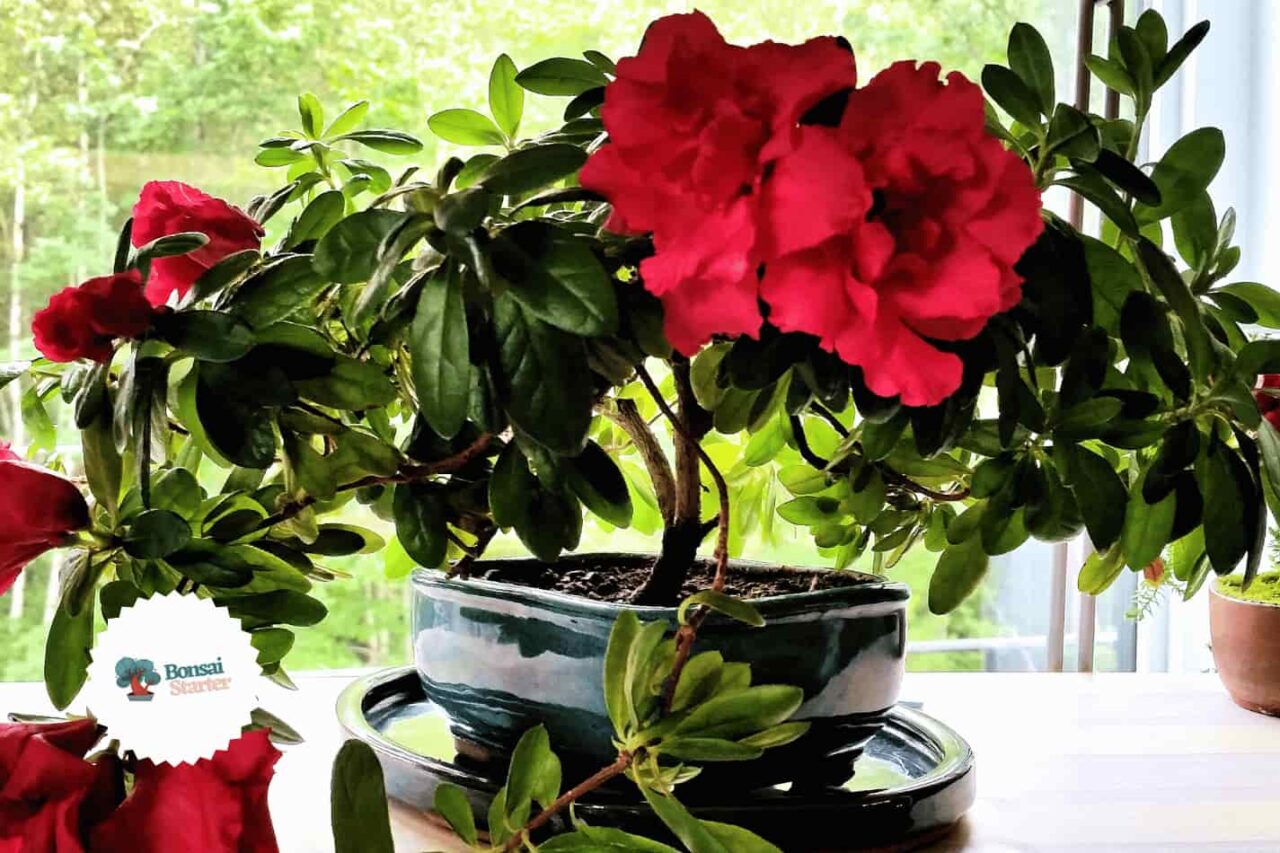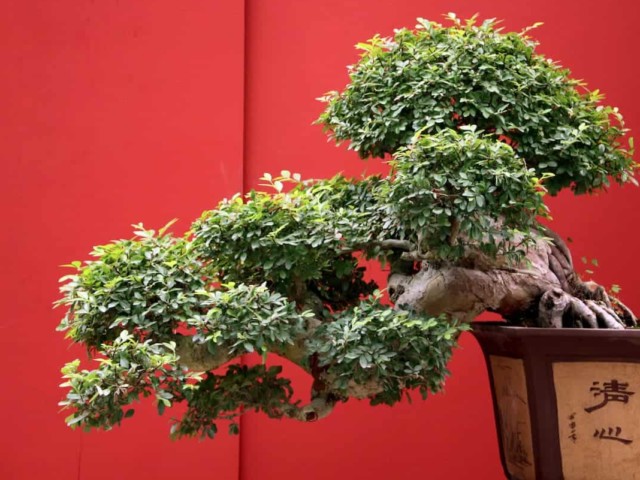Are you a gardening enthusiast with an azalea bonsai that’s not doing so well? Have you been trying to figure out why your azalea bonsai is dying?
If so, this blog post is for you! In this post, we’ll explore the potential causes of an ailing azalea bonsai and provide tips on how to keep your plant healthy.

Introduction
Welcome to the world of bonsai! Bonsai are miniature trees that are grown in containers, and they require special care and attention.
Azaleas are a popular type of bonsai that can be tricky to take care of. If your azalea bonsai is dying, it may be due to overwatering, underwatering, lack of sunlight, improper soil conditions, or moving the plant too often.
In this blog post, we will explore the signs of overwatering and underwatering, sunlight, and soil requirements, as well as troubleshooting steps and tips on how to prevent death.
We will also discuss fertilizing your bonsai tree so that it can flourish.
Signs of Overwatering
One of the most common reasons an azalea bonsai tree may die is overwatering.
Symptoms of overwatering include soft and black/brown tips to the leaves, yellowing leaves, and wilting leaves with brown spots.
Additionally, the soil may be too moist or contain mold, root rot, and fungal infections.
It is important to water the azalea bonsai in moderation—allowing it to dry out completely between waterings—to avoid these issues.
The consequences of overwatering can be fatal for the tree, so it is important to pay close attention to its watering needs.
Signs of Underwatering
Underwatering is a common cause of death among azalea bonsai trees, and it usually presents itself with brittle foliage and brown leaves.
The leaves will be crispy and brown if this is the problem, and the roots may start to rot.
To avoid this, keep the soil just damp and give your bonsai tree enough sunlight as described in the previous section.
You should also pay attention to the effects of moving the plant as discussed earlier in order to prevent it from dying prematurely.
If you find that you have been underwatering your azalea bonsai tree, take steps to correct the issue immediately and monitor your watering via an app or other methods.
Additionally, fertilizing your tree as advised can also help to keep it alive and healthy.
Sunlight Requirements
It is important to provide the right amount of sunlight to an azalea bonsai. Too much direct sunlight can scorch the leaves, while too little can lead to yellowing or browning of the leaves.
It is best to display your bonsai where it will receive bright indirect light for up to two or more hours daily.
If you can provide a few hours of morning sun or late afternoon sun, that would be even better.
During winter months when the interior air tends to be drier, you may want to move your bonsai outdoors (if possible) to take advantage of the humidity and extra sunlight.
Soil Requirements
Azalea bonsai trees need well-draining soil. Peaty soils are best, as they are lightweight and hold moisture without becoming waterlogged.
If the soil is too heavy and retains too much water, the roots can become too wet and rot. Moving the plant around can also damage the roots, so it’s best to keep the plant in one place.
Additionally, if the soil is not moist enough, the leaves can turn brown due to dehydration.
That’s why it’s important to check the soil before watering your azalea bonsai tree—it should be dry before you give it a thorough drink.
Effects of Moving the Plant
Moving your bonsai plant can have a negative effect on its health. Relocation and repotting can cause the tree to lose leaves, and it is important to take care when repotting your bonsai.
Gently take the plant from its present container and let the old dirt fall off. Do not snip the roots, as this can cause permanent damage.
Stress from moving can cause the tree to lose its leaves, so it is important to keep it in one place for as long as possible.
Troubleshooting Steps
If you notice that your bonsai tree is not looking healthy, it is important to take the proper steps to troubleshoot the problem.
First, examine the leaves for signs of yellowing or browning which could indicate that the bonsai is either overwatered or underwater.S
econdly, check the soil to ensure that it is not saturated with water and that it has the right consistency.
Additionally, ensure that your bonsai is getting enough sunlight, as most species require at least 6 hours of direct sunlight per day.
Finally, if you have recently moved your plant, try to keep it in one spot as much as possible since sudden changes in the environment can shock a bonsai tree and cause it to die.
If all else fails and you’re still unsure why your azalea bonsai is dying, it may be best to seek professional help.
Preventing Death
Preventing the death of your azalea bonsai is about understanding the needs of the plant and dedicating time to give it what it requires.
This includes providing adequate water, light, and soil – all of which are necessary for an azalea bonsai to thrive.
Water should be given in moderation, as overwatering can lead to root rot and death, while underwatering will cause the leaves to dry out and eventually die.
Sunlight requirements vary depending on the type of azalea, but generally, they need indirect sunlight or partial shade.
Be sure to check the soil before watering it – if it’s wet or damp, wait until it dries out before adding more water.
Moving the plant should also be avoided as it can cause significant shock or damage to its roots.
Finally, fertilizing your bonsai regularly with a balanced fertilizer is important for overall health and longevity.
Following these tips will help ensure that your azalea bonsai remains healthy and vibrant for many years to come.
Fertilizing the Plant
Fertilizing an azalea bonsai can be beneficial to its health and growth, but it is important to consider the plant’s other needs first.
Too much fertilizer can cause fertilizer burn, while too little can cause stunted growth. To avoid this, it is best to only fertilize azalea if a soil test indicates that nutrients are very low.
In that case, water the plant effectively just before fertilizing. Then apply a complete liquid fertilizer for flowering plants at half strength every 6 weeks throughout the growing and flowering period, typically between spring and fall.
Ensuring that your azalea bonsai has the proper amount of water, sunlight, soil, and nutrition will help keep it healthy and alive.
Conclusion
In conclusion, proper care is essential for keeping your azalea bonsai alive and healthy.
Always be sure to check the soil for moisture before watering, as overwatering and underwatering can both cause death.
Keep the plant in a spot that gets plenty of sunlight, and use the correct soil with added fertilizer when repotting.
Avoid moving the plant around too much as this can shock it and cause death. With these tips in mind, you can keep your azalea bonsai looking great for many years to come!






